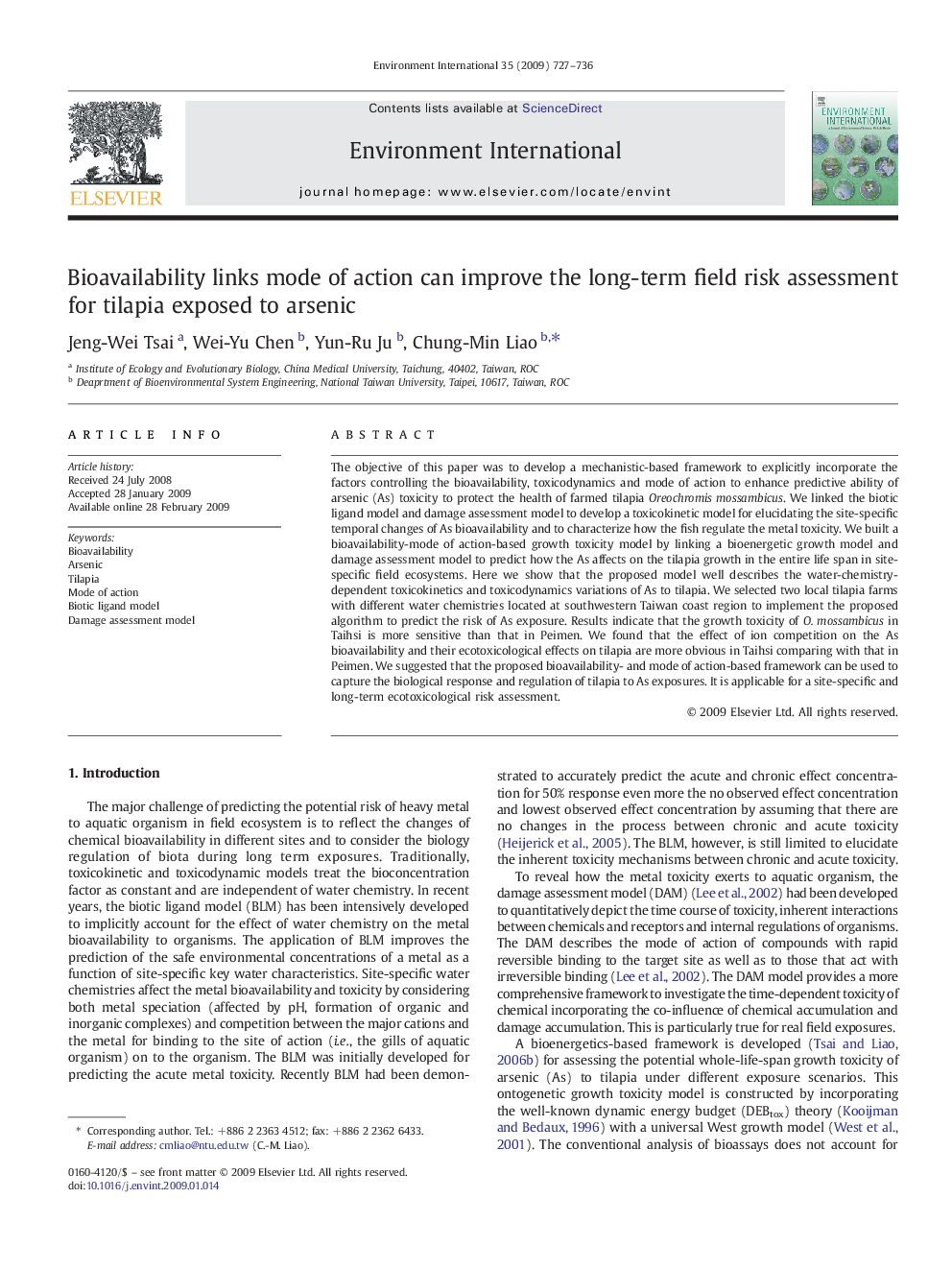| Article ID | Journal | Published Year | Pages | File Type |
|---|---|---|---|---|
| 4423492 | Environment International | 2009 | 10 Pages |
The objective of this paper was to develop a mechanistic-based framework to explicitly incorporate the factors controlling the bioavailability, toxicodynamics and mode of action to enhance predictive ability of arsenic (As) toxicity to protect the health of farmed tilapia Oreochromis mossambicus. We linked the biotic ligand model and damage assessment model to develop a toxicokinetic model for elucidating the site-specific temporal changes of As bioavailability and to characterize how the fish regulate the metal toxicity. We built a bioavailability-mode of action-based growth toxicity model by linking a bioenergetic growth model and damage assessment model to predict how the As affects on the tilapia growth in the entire life span in site-specific field ecosystems. Here we show that the proposed model well describes the water-chemistry-dependent toxicokinetics and toxicodynamics variations of As to tilapia. We selected two local tilapia farms with different water chemistries located at southwestern Taiwan coast region to implement the proposed algorithm to predict the risk of As exposure. Results indicate that the growth toxicity of O. mossambicus in Taihsi is more sensitive than that in Peimen. We found that the effect of ion competition on the As bioavailability and their ecotoxicological effects on tilapia are more obvious in Taihsi comparing with that in Peimen. We suggested that the proposed bioavailability- and mode of action-based framework can be used to capture the biological response and regulation of tilapia to As exposures. It is applicable for a site-specific and long-term ecotoxicological risk assessment.
